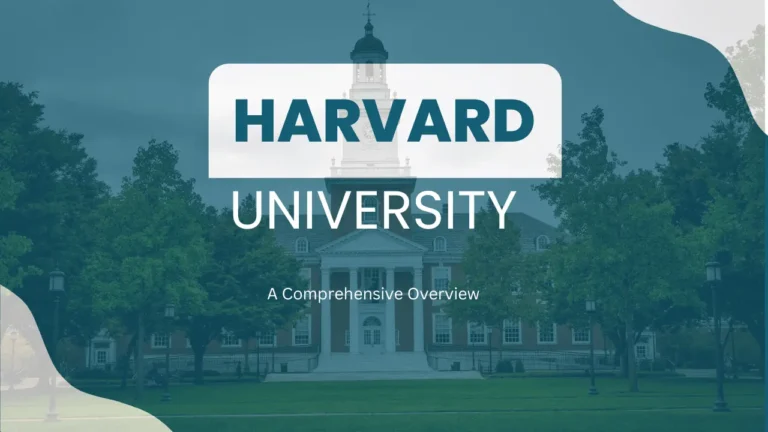Stanford University: A Comprehensive Overview for MS Programs
Stanford University is globally recognized as one of the top institutions for graduate education, particularly in the fields of science, engineering, and technology. Located in the heart of Silicon Valley, Stanford provides unparalleled opportunities for innovation, research, and professional growth. The university’s Master of Science (MS) programs attract some of the brightest minds from around the world, offering them a rigorous education combined with opportunities to engage with leading experts and industry leaders.
Academic Excellence
Stanford offers a wide range of MS programs across various disciplines, each designed to equip students with deep knowledge, technical skills, and the ability to solve complex problems. The most popular MS programs at Stanford include:
- Computer Science: Stanford’s MS in Computer Science is one of the most sought-after programs globally. The curriculum covers a wide range of topics, including artificial intelligence, machine learning, human-computer interaction, and software theory. Stanford’s proximity to leading tech companies provides students with unique internship and job opportunities.
- Electrical Engineering: The MS in Electrical Engineering at Stanford is renowned for its focus on innovation and research. Students have access to state-of-the-art laboratories and can specialize in areas such as signal processing, communications, and semiconductor technology.
- Mechanical Engineering: Stanford’s MS in Mechanical Engineering emphasizes both theoretical and practical knowledge. The program allows students to engage in cutting-edge research in areas like robotics, fluid mechanics, and energy systems.
- Management Science and Engineering (MS&E): This interdisciplinary program combines engineering, management, and social sciences, preparing students for leadership roles in technology and business sectors.
- Biomedical Informatics: Stanford’s MS program in Biomedical Informatics trains students to apply data science and computational techniques to solve problems in biology and medicine. The program is at the forefront of research in personalized medicine, bioinformatics, and health data analytics.
Curriculum and Research Opportunities
Stanford’s MS programs are designed to be flexible, allowing students to tailor their education to their specific interests and career goals. The university follows the quarter system, enabling students to take a variety of courses and engage in different research projects.
Research is a cornerstone of Stanford’s MS programs. Students have the opportunity to work alongside world-renowned faculty on cutting-edge research projects. These projects often lead to publications in prestigious journals, patents, or the founding of startups. Stanford’s research facilities are among the best in the world, including the Stanford Linear Accelerator Center (SLAC), the Bio-X interdisciplinary research initiative, and the Stanford Artificial Intelligence Laboratory.
Industry Connections and Entrepreneurship
One of Stanford’s unique strengths is its close ties to industry, particularly in Silicon Valley. Many of the world’s leading technology companies, including Google, Apple, and Facebook, have connections to Stanford, either through faculty, alumni, or research collaborations. This relationship provides Stanford MS students with unparalleled opportunities for internships, networking, and job placements.
Stanford also has a strong entrepreneurial culture. The university’s proximity to venture capital firms and startups makes it a hub for innovation and entrepreneurship. Programs like the Stanford Graduate School of Business’s Startup Garage and the Stanford Technology Ventures Program (STVP) support students in launching their own ventures.
Campus Life
Stanford’s campus is one of the largest and most beautiful in the world, spanning 8,180 acres in the San Francisco Bay Area. The campus features a mix of historic and modern architecture, including the iconic Main Quad, Hoover Tower, and the modern Engineering Quad.
Student Life
Stanford has a diverse and vibrant student community. Graduate students have access to numerous student organizations, professional societies, and cultural groups. These organizations provide opportunities for networking, professional development, and social interaction.
Stanford’s residential life is also a key part of the student experience. The university offers a variety of housing options for graduate students, ranging from on-campus apartments to shared housing. Living on campus allows students to be part of a close-knit community and take advantage of the university’s resources and events.
Alumni Network
Stanford has one of the most powerful alumni networks in the world. Stanford alumni are leaders in virtually every field, from technology and business to academia and government. The university’s alumni network provides current students with mentorship, networking opportunities, and access to a global community of professionals.
Global Impact
Stanford University is not only a leader in education and research but also in making a global impact. The university’s initiatives in sustainability, healthcare, and technology are aimed at solving some of the world’s most pressing challenges. Stanford’s faculty and students are actively involved in projects that address issues such as climate change, global health, and poverty.
Admissions and Financial Aid
Admission to Stanford’s MS programs is highly competitive. The university looks for candidates with strong academic backgrounds, research experience, and a clear vision for their future careers. Applicants are typically required to submit GRE scores, transcripts, letters of recommendation, and a statement of purpose.
Stanford is committed to making its education accessible to students from all backgrounds. The university offers a variety of financial aid options, including fellowships, assistantships, and loans. Many MS students receive funding through research assistantships or teaching assistantships, which provide both financial support and valuable professional experience.
Conclusion
Stanford University stands at the pinnacle of higher education, particularly in science, engineering, and technology. Its Master of Science programs offer students a world-class education, unparalleled research opportunities, and a gateway to a successful career in academia, industry, or entrepreneurship. With its innovative curriculum, strong industry connections, and vibrant campus life, Stanford is undoubtedly one of the best places in the world to pursue an MS degree.



